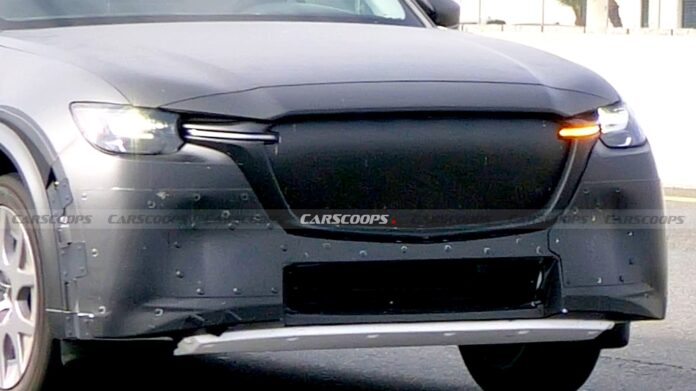Mazda is developing a new electric vehicle specifically for the American market, after the limited release and commercial failure of the MX-30. The MX-30, sold exclusively in California, managed only 324 units in 2022, hampered by its high price, short 100-mile range, and unconventional rear “suicide” doors. The new model represents a shift in strategy, aiming for a more competitive and practical EV offering.
Rethinking the EV Approach
Following the MX-30’s underwhelming performance, Mazda partnered with Chinese manufacturers for the EZ-6 and EZ-60 models, primarily targeting markets outside the US. However, the company recognized the need for a dedicated EV designed to meet American consumer demands. The upcoming model, recently spotted undergoing testing near Mazda’s Irvine, California R&D center, signals a renewed commitment to the US EV market.
First Look: Testing and Design Clues
The test mule is heavily disguised, using a modified body shell derived from the CX-70 or CX-90. Key design features observed include a fully enclosed grille, blocked-off air curtains, and a small central intake. The vehicle has a shorter wheelbase and rear overhang than the CX-90, suggesting a more compact crossover profile. The rear quarter glass resembles that of the CX-80, further indicating a distinct, yet familiar, design direction.
Size and Aerodynamics
Spy photographers estimate the crossover’s size to be comparable to the CX-50. Despite appearing wider, the vehicle’s wheels are significantly tucked in, suggesting narrower tracks than the CX-90. This design choice likely prioritizes aerodynamic efficiency, supported by the presence of aerodynamic rims. A possible charging port is concealed beneath a rear bumper flap.
Skyactiv EV Scalable Architecture
Mazda first announced the Skyactiv EV Scalable Architecture in 2021, envisioning a dedicated EV platform capable of supporting various vehicle sizes and body types. The company originally planned to launch multiple vehicles on this platform between 2025 and 2030. Delays have pushed the expected debut to 2027, with a US release potentially following in 2028.
This new EV represents Mazda’s second major attempt to establish a foothold in the competitive US electric vehicle market. The shift from the niche MX-30 to a more conventional crossover design suggests a pragmatic approach aimed at appealing to a wider range of consumers. The success of this new model will depend on its pricing, range, and overall competitiveness against established EV rivals
